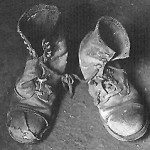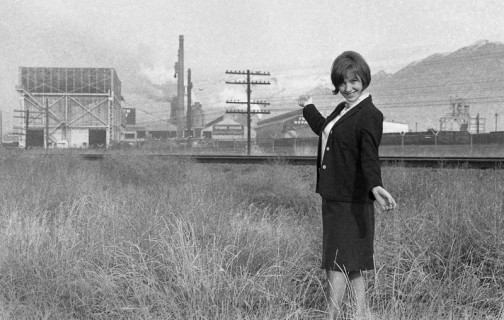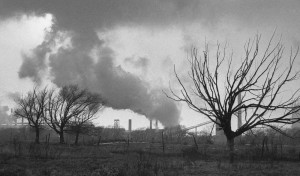As a general rule, it’s a lot more fun growing up in a mining town than it is to grow up on a farm. Farm kids have to work, while mining camp kids mostly play. I had only one household chore, which was shoveling coal from the coal bin into the Stokermatic, which fed a furnace that was half the size of a Bessemer converter. Come Christmastime, the furnace doubled as a mailbox.
Here’s how: Mom would ask me to make a list of what I’d like Santa to bring me. Then we’d go downstairs into the basement, where she’d crack open the furnace door and toss my wish list into the flames.
“Santa’s elves will read your message in the smoke,” she explained. So it was much the same as casting a vote for a democratic candidate in heavily gerrymandered Salt Lake County.
Throughout the winter, the coal furnaces of our town would be ablaze day and night, filling the sky with sulfurous fumes that savored of a yellowish London fog. Come summer, the furnace cleaner man would come by to suck the soot from our ductwork, using a truck-mounted vacuum cleaner that deployed a dirt bag the size and shape of the Hindenburg. Neighbor kids would gather around—not standing too close, however—for fear the giant bag might suddenly burst and bury us alive in a deadly pyroclastic flow. Oh, the humanity!
Early each morning we’d tune into KOAL radio for the daily mine report. Which of the 28 mines in the county were in operation and which were not? If your father’s mine was working, he’d pull on his work boots, grab his lunch pail and head out. If idle, he’d repair to the garage to tinker with his truck.
My father was a schoolteacher, so he never went underground except once or twice a year as a volunteer at our church’s so-called welfare farm. I dreaded those callings, because it meant that I—like so many of my classmates—stood at risk of becoming an orphan. Happily, the church mine was eventually shut down after not just one but two Mormon bishops were killed in cave-ins.
This is not to imply that coal mining is a worse occupation than school teaching. For one thing, it pays more; thus, whenever there was a hiring boom in the coal industry, half the teachers at Carbon High would immediately switch from chalk dust to coal dust.
Some of our coal was burned at Utah Power & Light’s generating plant at Castle Gate. Trainloads from the coking ovens at Sunnyside would go over the mountain to fuel the Geneva steel plant in Orem. Thanks largely to Geneva Steel, Utah County air smelled pretty much the same as Carbon County air, and for a time it looked as if I might even begin to feel at home there. Architect of the plan was a girlfriend named Christine, who had come all the way from Manchester, England, in search of a nice Mormon boy to marry. At the time, many thought the two of us might be a good match; however, I soon tired of the relationship. Turns out Christine suffered from a respiratory ailment—the result of growing up in the UK’s industrial heartland. From time to time she’d suddenly grow faint and topple over. As a result, our make-out sessions consisted almost entirely of mouth-to-mouth resuscitation.
“Oh, Richard, wouldn’t you like to settle down in Orem and raise a huge family?” she asked upon regaining consciousness.
My answer was an emphatic NO. Because even though there was smoke in my eyes, it was beginning to seep into my lungs.


